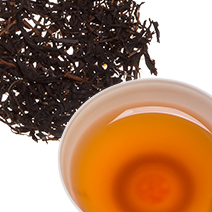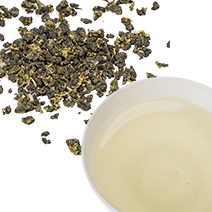The Best Brewing Methods to Make Tea at Home
Lorena Romo
 Coffee and tea are two of the most popular beverages in the world. If you enjoy a delicious cup of either, it’s always good to know how to brew them in the best way possible to get the most out of every cup.
Coffee and tea are two of the most popular beverages in the world. If you enjoy a delicious cup of either, it’s always good to know how to brew them in the best way possible to get the most out of every cup.
A Brief History of Coffee and Tea
Coffee can be traced back to ancient Ethiopia as long ago as 850 CE, but it didn’t make its way to Europe until the 1700s. Today, coffee is by far one of the most popular and beloved beverages on the planet.
Tea made its first appearance in China, and then reached Japan by the 12th century. Tea was first brought to Russia around 1618, when it was introduced by a Chinese ambassador. Soon, all of Europe fell in love with tea, and it spread throughout the continent. Settlers eventually brought it to the New World, and later, the infamous 1773 Boston Tea Party was held.
Not only are tea and coffee delicious to drink, but each offers a few health benefits, too. Tea is rich in antioxidants, which can help your body fight cell-damaging free radicals. Both coffee and tea contain varying amounts of caffeine to help boost your mood and improve energy levels. Some studies show that both of these drinks may help to fight cancer and may even play a role in preventing or improving symptoms of Parkinson’s disease. Tea has less caffeine than coffee but is richer in polyphenols, a powerful form of antioxidant. Let’s take a closer look at tips for brewing coffee and tea so you can enjoy them to the fullest at home.
Tea brewing methods
When making tea, keep in mind that brewing is the act of making the tea, while steeping is the act of allowing the tea to slowly seep into the water before drinking. Here are some popular methods for brewing tea at home.
- Tea ball infuser. This method uses a mesh ball with a hinge that you fill with loose tea leaves. This metal version of a tea bag is dipped in hot water and then removed once your tea is fully steeped. You can use your favorite blend of tea leaves or mix several varieties. You can even add spices for a more unique flavor.
- French press. You can use a French press to make several cups of tea at one time. Make sure that you don’t over-steep your tea, since the leaves aren’t removed after you steep them.
- Tea brewing strainers. A tea strainer sits over your cup and holds tea leaves in a mesh-style basket. You pour hot water over the strainer, and it passes over the tea leaves and through the mesh. Remove the strainer, and enjoy your tea. Just remember that you don’t get much brewing time with this method, but it’s a good option for a quick cup.
- Paper sachet. Store-bought pouches are great for brewing tea, or you can make your own using a coffee filter. Paper sachet tea bags are disposable or compostable and easy to brew and steep.
- Teapot. A classic teapot is another great way to make your favorite tea. Choose an iron teapot to make your favorite Asian green tea, or use a glass teapot for white tea. Iron is not recommended for black tea, which should be brewed at a higher temperature.
Popular types of tea
Here are some of the most popular types of tea and the differences between them.
- Tisanes. Tisanes are a type of herbal, medicinal tea. True tea comes from the Camellia Sinensis plant, while herbal teas, or tisanes, are a water-based infusion of different flowers, leaves, herbs, and/or spices. Herbal tea is essentially any drink derived from any plant other than a “true tea.”
- Teabags. Brewing tea with a teabag is the easiest, most popular choice. This tea typically comes pre-packaged in a set amount, and it works great for steeping a classic cup of tea quickly, right in your teacup.
- Infusions. A tea infusion involves steeping a variety of herbs or spices in hot water to give your glass of tea some additional flavor.
Tips for brewing great tea at home
Here are a few tips and considerations to help you learn how to make the tastiest tea at home.
- Use the ideal water temperature. Don’t heat your tea or the water in the microwave if you can avoid it, since it may make your tea taste bitter. Instead, make tea using water that has been boiled on the stove for the cleanest, freshest flavor.
- Mind your water quality. Use clean, filtered water rather than tap water, which may make your tea taste “off,” particularly if you have well water or hard water.
- Keep an eye on the clock. Steep times vary depending on the type of tea blend or tea leaves you use. You may need to experiment until you find the right time, but it’s best to do a small taste test every 30 seconds as you go.
- Use the right amount of tea leaves. Use more tea leaves for a stronger brew. A good starting point is to use two grams of tea for every eight ounces (230 ml) of water, then add more if you find that you prefer a stronger flavor or a deeper, richer taste.
- Compost and reuse your tea bags and tea leaves. You can reuse old tea bags and tea leaves as compost. Apply loose, used tea leaves directly to your soil, or place used tea in a compost container and mix it with other compost to enrich the soil.
- Stay on top of tea trends. Trends in tea change on the regular. The most popular current trends include Chai tea, Matcha tea, new tea blends with spices, mushroom-based teas like Chaga, Hojicha Tea, new flavors, and biodegradable tea bags.
With the right tools, the right quality teas and coffees, and some practice, it’s easy to brew delicious coffee and tea at home. Find the right machine or pot that works for you, and remember to use the cleanest, freshest water and the best possible coffee beans or tea blends. Over time, you’ll find that enjoying a great cup of coffee or tea in the comfort of your home is your favorite way to unwind.
The article was originally posted on Porch.com and published with with their permission. The original article also contains tips how to make coffee, fill free to follow the link to read about it.
Related Categories
Black and Red Tea
Taiwanese black tea (also named as red tea) were brought to Taiwan during the 19th century from the mainland's. Because of climate conditions Taiwanese black tea are not so strong as teas from mainland.
Milk and Flavored Oolong
Taiwan is famous with its milk oolong tea, which has a light yellowish liquid with milky sweet aroma and smooth and sweet lingering taste. Milk Oolong Tea is a very special hand processed tea from Taiwan with unique milk taste.


